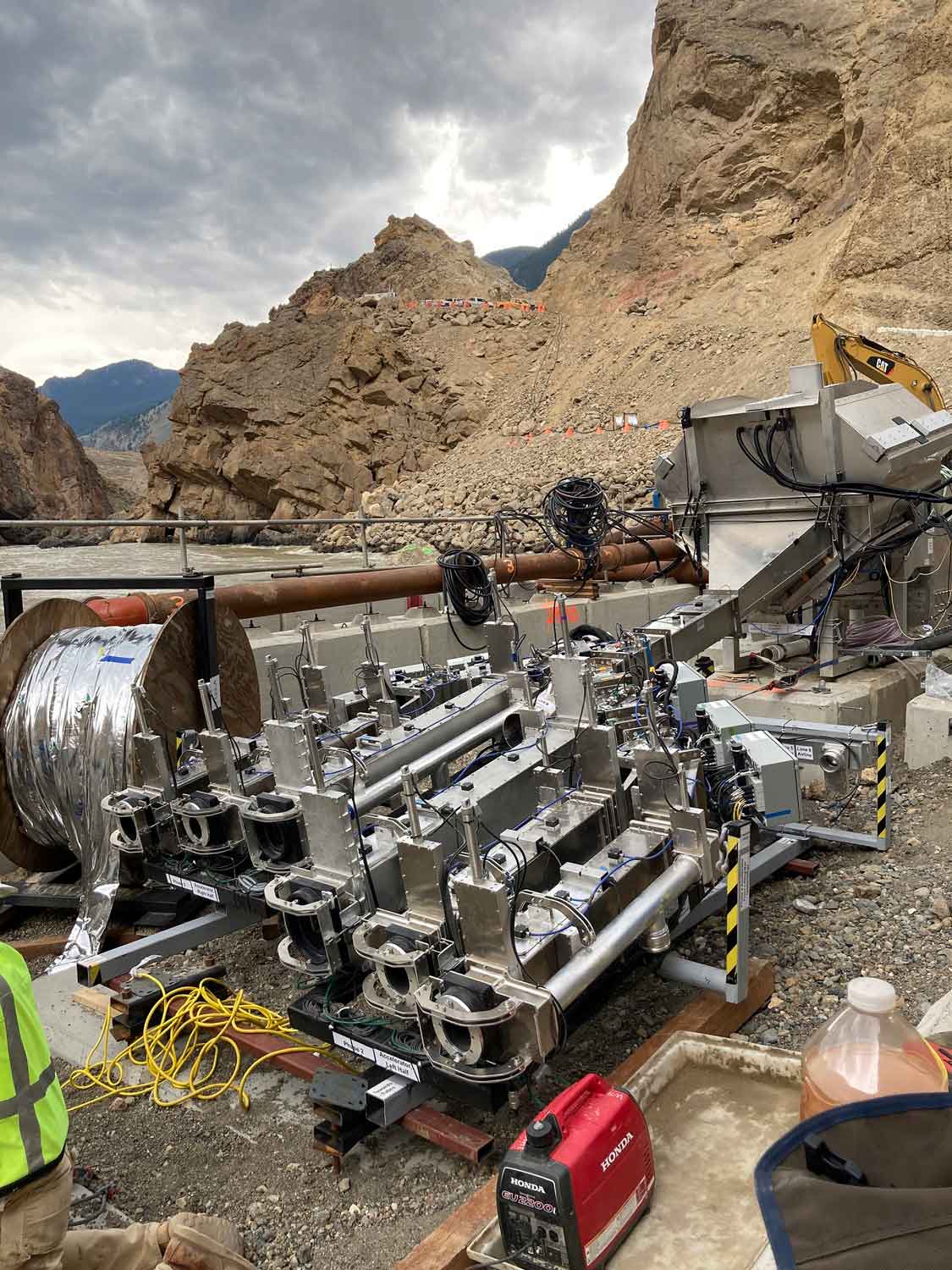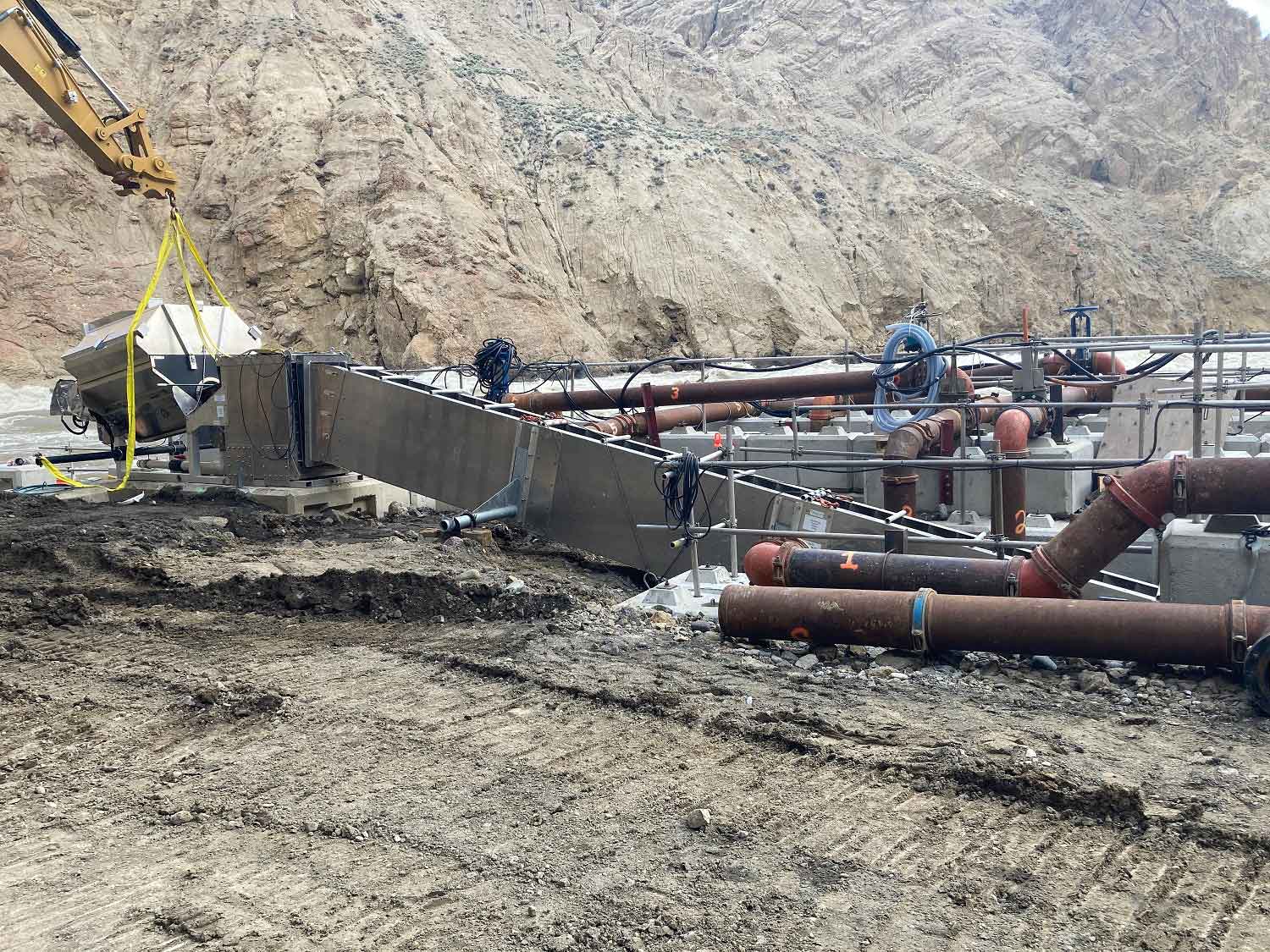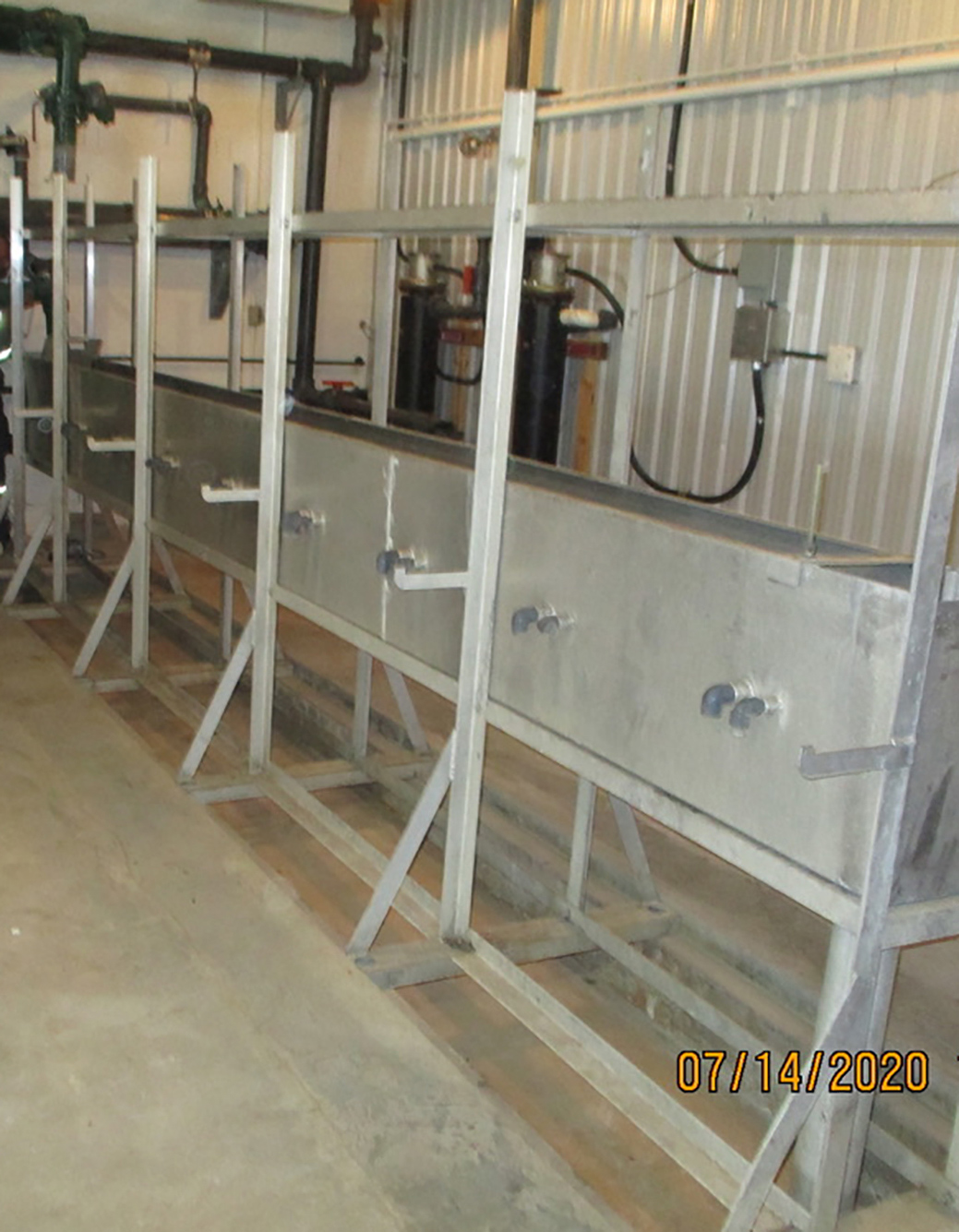GLG
Well-Known Member
Big Bar landslide response information bulletin
July 17 2020
Ongoing onsite operations
Water levels at the Big Bar landslide site receded this week, allowing crews to reinstall the alternative fish passage systems.
Prime contractor Peter Kiewit Sons ULC, together with Whooshh Innovations, focused efforts on the installation of the higher capacity, six-lane Whooshh Passage Portal system. The additional tubes will provide passage for a broader range of salmon sizes, including sockeye. Crews mounted the main control system on a new pad set at a higher elevation, and reinstalled the associated mechanical and electrical components. Although some of the pumps sustained damage during the extreme high water last week, they have since been repaired or replaced.
The recent flood conditions also resulted in sediment accumulation in portions of the concrete fish ladder. Crews have removed most of the debris to ensure migrating salmon can swim up the ladder to reach the holding pool. From there fish will enter the Whooshh system or be transported by truck to French Bar Creek.
Crews also completed work on other areas affected by high water: they raised the pad elevation for the office trailers and repaired the access platform decking over the river.
Update on fish monitoring
Chinook have been observed in increasing numbers at the sonar station downstream of the Big Bar ferry. For the radio tagging program, between July 10 to 15, technicians had significant success tagging 131 chinook, bringing the total number to 182. As of July 15, 13 of the tagged fish had moved into the area below the slide, but none had moved past the slide site to date.
While no sockeye have been detected in the vicinity, lower Fraser River monitoring has detected Early Stuart sockeye starting their migration up river. In previous years, during lower water conditions, sockeye would take approximately 10 days to migrate from the Mission hydroacoustic facility to Big Bar (approximately 310 km by water).
Enhancement program update
Since restarting operations on July 12 following the peak of high water, the fish wheel crew captured 14 chinook. These fish were transferred to the French Bar Creek holding facility and DNA testing is underway. Based on their genetic identification and conservation status, targeted high-priority chinook will be transported to the Vanderhoof hatchery where they will serve as broodstock, providing eggs and milt for fertilization. The rest will be released back into the Fraser to continue their migration to their natal streams.
Facility upgrades are also ongoing for the Spruce City Wildlife Association and Quesnel River Research Centre as part of the Big Bar enhancement program.
Current images of work being done at the landslide site

Installation has started on Phase 2 of the Whooshh Passage Portal. Top right: the scanner box component assesses each fish entering the pump. Centre: the accelerator directs the fish into the assigned tube.

Reinstallation of the Whooshh Passage Portal components after water levels receded, including the steep pass and scanner skid.

Water distribution system being assembled for egg incubation at the Quesnel River Research Centre.
https://www.pac.dfo-mpo.gc.ca/pacific-smon-pacifique/big-bar-landslide-eboulement/index-eng.html
July 17 2020
Ongoing onsite operations
Water levels at the Big Bar landslide site receded this week, allowing crews to reinstall the alternative fish passage systems.
Prime contractor Peter Kiewit Sons ULC, together with Whooshh Innovations, focused efforts on the installation of the higher capacity, six-lane Whooshh Passage Portal system. The additional tubes will provide passage for a broader range of salmon sizes, including sockeye. Crews mounted the main control system on a new pad set at a higher elevation, and reinstalled the associated mechanical and electrical components. Although some of the pumps sustained damage during the extreme high water last week, they have since been repaired or replaced.
The recent flood conditions also resulted in sediment accumulation in portions of the concrete fish ladder. Crews have removed most of the debris to ensure migrating salmon can swim up the ladder to reach the holding pool. From there fish will enter the Whooshh system or be transported by truck to French Bar Creek.
Crews also completed work on other areas affected by high water: they raised the pad elevation for the office trailers and repaired the access platform decking over the river.
Update on fish monitoring
Chinook have been observed in increasing numbers at the sonar station downstream of the Big Bar ferry. For the radio tagging program, between July 10 to 15, technicians had significant success tagging 131 chinook, bringing the total number to 182. As of July 15, 13 of the tagged fish had moved into the area below the slide, but none had moved past the slide site to date.
While no sockeye have been detected in the vicinity, lower Fraser River monitoring has detected Early Stuart sockeye starting their migration up river. In previous years, during lower water conditions, sockeye would take approximately 10 days to migrate from the Mission hydroacoustic facility to Big Bar (approximately 310 km by water).
Enhancement program update
Since restarting operations on July 12 following the peak of high water, the fish wheel crew captured 14 chinook. These fish were transferred to the French Bar Creek holding facility and DNA testing is underway. Based on their genetic identification and conservation status, targeted high-priority chinook will be transported to the Vanderhoof hatchery where they will serve as broodstock, providing eggs and milt for fertilization. The rest will be released back into the Fraser to continue their migration to their natal streams.
Facility upgrades are also ongoing for the Spruce City Wildlife Association and Quesnel River Research Centre as part of the Big Bar enhancement program.
Current images of work being done at the landslide site
Installation has started on Phase 2 of the Whooshh Passage Portal. Top right: the scanner box component assesses each fish entering the pump. Centre: the accelerator directs the fish into the assigned tube.
Reinstallation of the Whooshh Passage Portal components after water levels receded, including the steep pass and scanner skid.
Water distribution system being assembled for egg incubation at the Quesnel River Research Centre.
https://www.pac.dfo-mpo.gc.ca/pacific-smon-pacifique/big-bar-landslide-eboulement/index-eng.html

